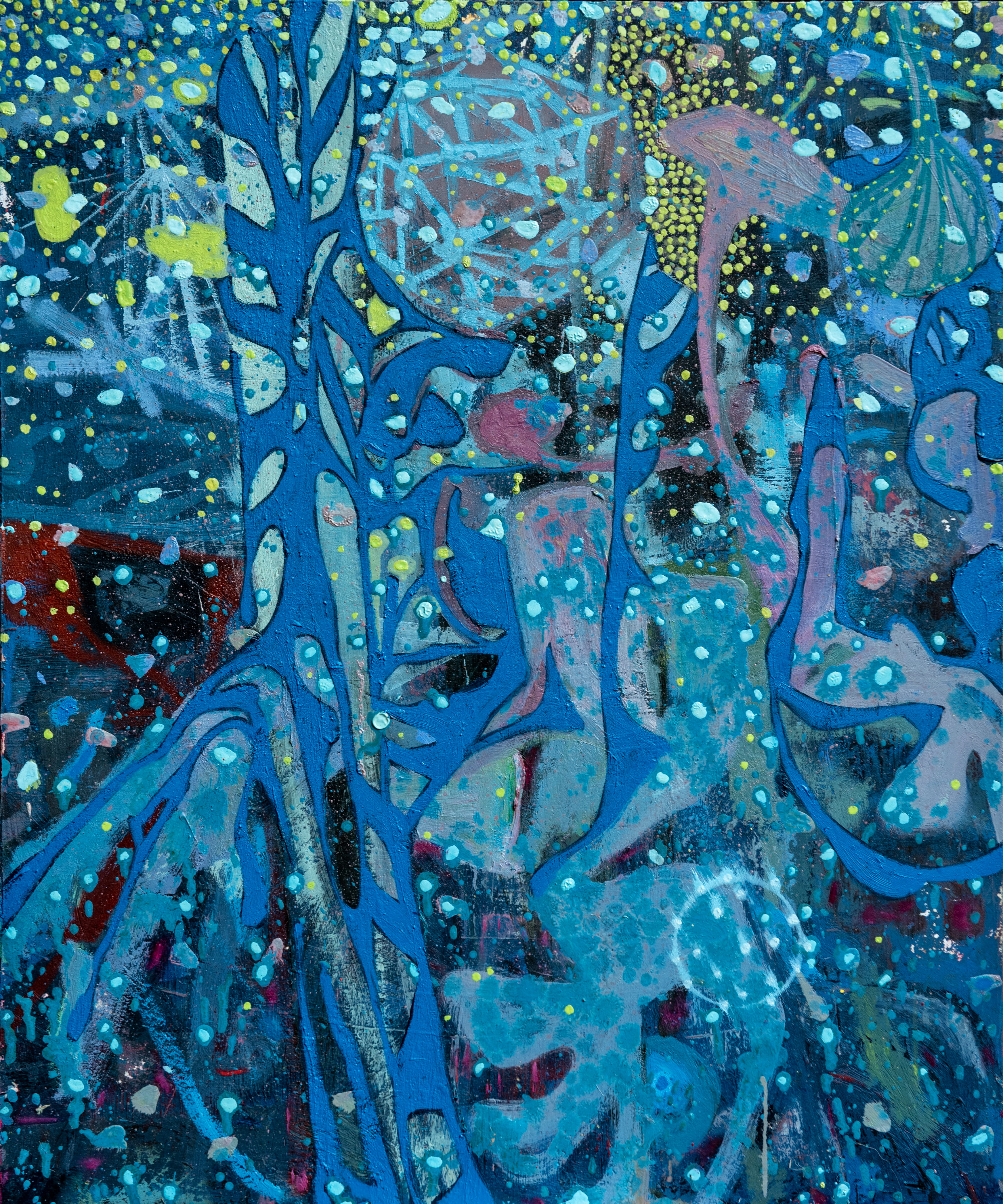Meet Joshua Weiss, Recipient of the Inaugural Provost Award for Undergraduate Teaching Impact
By Natalie Kostelni

As an undergraduate student at The Savannah College of Art and Design, Joshua Weiss laid the foundation for his future career as a visual arts instructor.
A painting major, Weiss was surrounded by young faculty who were helping to define SCAD’s direction and were eager to mentor new students. This early educational experience provided an intimate environment for students like him to learn and grow alongside their instructors.
“It was very special,” Weiss recalled in a recent interview. “If I didn’t have those instructors, I wouldn’t have fallen in love with painting like I did. It became a little community and that was something I was always looking for — to be around people who do your craft and talk about it. It’s not a given something like that will happen.”
The experience was seminal for Weiss, a teaching professor at the Antoinette Westphal College of Media Arts and Design. It showed him a path forward as an artist and teacher and shaped his view on the importance of first-year college experiences and building community.
“My curriculum is rooted in the first-year experience, and, for Drexel students, the first-year experience is crucial to their overall success,” he said.
In 2023, Weiss was among four Drexel faculty recognized for implementing outstanding innovations in teaching and learning with the inaugural Provost Award for Undergraduate Teaching Impact. The award recognizes full-time faculty who have made a distinctive impact through excellence in teaching, primarily at the first- or second-year undergraduate level.
In this interview, Weiss shares more about his approach to teaching and what it means for his students to achieve success in their first year.

Art by Joshua Weiss
How would you describe your teaching philosophy?
The core of my curriculum is rooted in the Design Foundations Sequence. The Sequence
consists of three courses: Design I (two-dimensional design), Design II (color) and Design III (three- dimensional design). These courses provide first-year Westphal students the building blocks to independently create complex, well-crafted, thoughtful designs. In conjunction with drawing courses, the Design Foundation Sequence comprises a majority of the studio courses for a student’s first-year experience within the design disciplines of the Westphal College of Media Arts & Design.
Why is it important for students to take these courses?
There are several reasons. Foundation courses are a major component of the first-year experience for students working in the applied arts. By blending formal traditions in design education with state-of-the-art technologies, this program prepares students to analyze visual information and collaborate with their peers in order to design intuitively and successfully. These courses are charged with establishing a Westphal student’s visual acuity to prepare them for entering their chosen discipline. The exploration of materials and craft makes the Design Foundation Sequence a platform for freshman students to exercise their skills and ideas as they enter the field of design, the community of Westphal College, and the larger community of Drexel University.
What goals do you have for your students by the end of their first year?
The underlying goal of my curriculum is to build students’ endurance and creative thinking. As designers, our endurance is geared toward making things and the act of making is akin to an athletic endeavor. It’s exhausting. Students often don’t know how to utilize their time well. Assignments are designed to be challenging yet manageable, promoting both skill development and creative exploration. The ultimate goal is for students to begin seeing themselves as creators, equipped with the skills and confidence to pursue their design ambitions.
What is a design ecosystem in the classroom?
A strong design ecosystem is comprised of a group of students who are thinker-makers. It is a space where balance is achieved through equitable practices giving all a voice. When working within a design ecosystem, my job is to aid in harnessing and developing a student’s strengths. Every human being has design capabilities, but many first-year students enter Westphal with constraints on their ability to think and work in the studio. An incoming student has many hurdles to overcome on their path toward being a designer, whether it is a lack of visual experience, under-utilized skills, misguided information, or the confidence needed to be successful. Opening the student’s mind to the complexities of being a visual thinker within a healthy ecosystem addresses the student’s deficiencies and allows them to overcome obstacles. Every educator knows that the majority of a student’s learning comes from self-discovery within a community of peers. It is my responsibility as the instructor to facilitate a design ecosystem in every course that I teach.
What do you mean when you say your curriculum strives to achieve the “Power of Limits?”
As an instructor, you can’t just tell a student to do what you want. Understanding the formal elements and principles of design is meaningless without creative drive. “Power of Limits” is a design term that states: “Adherence to a prescribed set of rules will allow creativity to flourish.” My curriculum strives to achieve a balance between the “Power of Limits” set forth within an assignment and the creative freedom a student requires to generate unique designs.
What is the significance of the first-year experience for Drexel students?
Once students arrive at Drexel, the first year is fertile ground to begin building community and students’ relationship with Drexel and their college career. An inclusive environment with a focus towards learning and experimentation provides students with the greatest opportunity to harness their creativity and potential.
What does Westphal do to foster a sense of community?
We have a Welcome Week that brings a cohort of 500 students together in one place to recognize the community aspect of the first year. We also want them to begin making connections within Westphal and across the university so they can build a community that is cross disciplinary. It is so important, especially in the 21st Century, for students to build relationships, ties and skillsets to other students that broadens their community. We also have the Westphal Garbage Gala, a cross-disciplinary event involving fashion design, art design, digital media, film and video. We have hosted 300 to 400 people including students and alumni at the Academy of Natural Sciences for the gala. This is the sixth year for the event and, while I’ve been involved since the beginning, we take pride in the students running it and doing most of the work.




